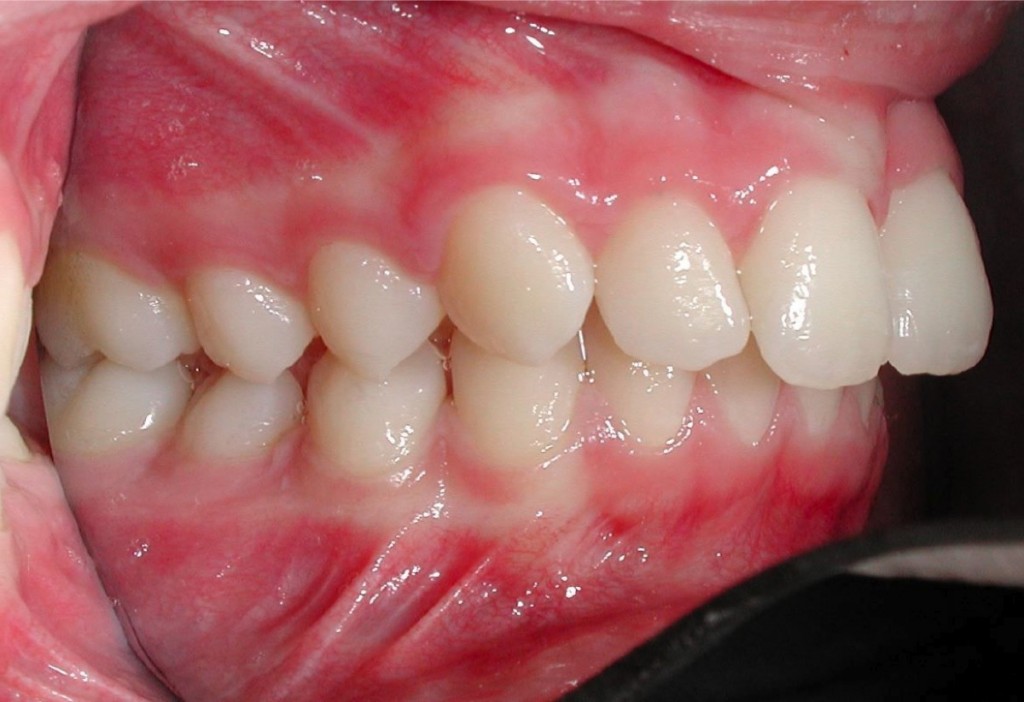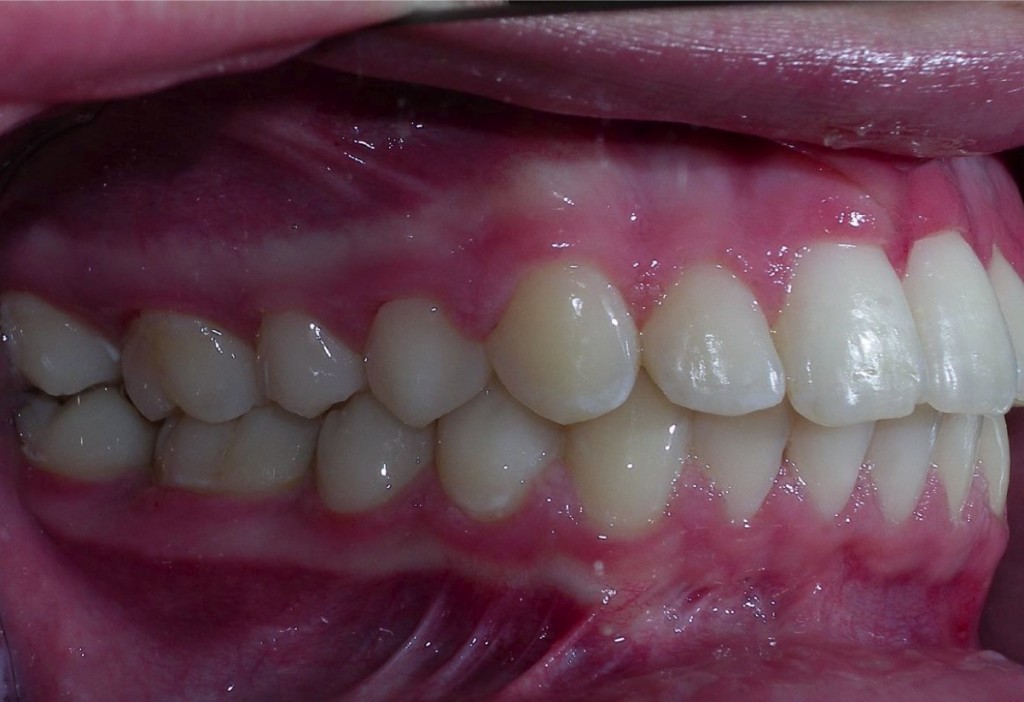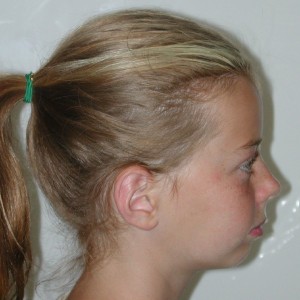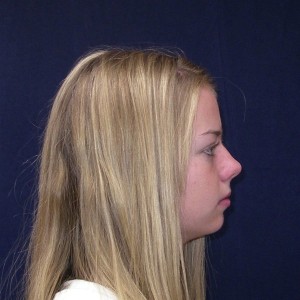When is the right time for my child to have orthodontic treatment?
I have met many families over the years who have expressed confusion regarding the correct age for their child to undergo orthodontic treatment. Many of these parents have consulted with several orthodontists and are very confused as to which recommendation to follow. It is my intent, with this blog, to educate parents on this topic using scientifically supported facts rather than opinion.
The American Association of Orthodontists recommends that children have an initial orthodontic evaluation “no later than age 7.” (Published on the AAO website and in various literature from the organization). The reason that this age is recommended is that this is typically when the permanent 1st molars and incisors are actively erupting into the mouth. As such, this is an appropriate time for an orthodontist to make sure that the eruption process is progressing without interruption and that no other serious problems are present. This is also a convenient time for the orthodontist to educate the family regarding the anticipated need for, and reasoning behind, future orthodontic treatment. It is important to understand that the AAO recommends an “evaluation” no later than age 7 but does not recommend “treatment.” It is also important to understand that “age 7″ is rather arbitrary and that the “dental age” of a child varies greatly from their “chronologic” age. As you will soon read below, most children do not require any orthodontic treatment at these early ages.
In the orthodontic profession, there seems to be a consensus to utilize early treatment to correct crossbites (upper back teeth set inside of lower back teeth or upper front teeth set behind lower front teeth), to address severe crowding, and to improve dental alignment to reduce the risk of trauma and/or improve self esteem for a self conscious child. Most of the debate surrounding proposed early treatment involves treatment of the “Class II” bite. A “Class II” bite simply means that the lower jaw is positioned too far back relative to the upper jaw (or vice versa a small percentage of the time). The following image illustrates the “Class II” bite and, specifically, shows the lower molar & cuspid (“eye tooth”) positioned farther back in the mouth than the upper molar & cuspid.
Historically, orthodontists believed that mandibular (lower jaw) growth could be significantly modified through the use of orthodontic appliances termed “functional appliances.” Examples of modern day “functional appliances” are the Herbst appliance, the MARA appliance, and the Twin Block appliance. The orthodontic profession believed that the “body of the lower jaw (the part that houses the teeth)” could be lengthened with these appliances. The current orthodontic scientific literature clearly refutes these prior beliefs and it is now widely known that the “body of the lower jaw” cannot be lengthened with orthodontic appliances, i.e. this is genetically predetermined. In reality, the “functional appliances” that we orthodontists utilize achieve forward movement of the lower jaw via a phenomenon called “functional displacement” and by changing the positions of the teeth. “Functional displacement” involves changes that occur in the temporomandibular joint complex as well as changes that occur on the mandibular condyle (the top part of the lower jaw.) The biology behind these changes is such that treating Class II bites at very early ages is no longer “necessary” in most cases. As a result, orthodontists are now able to routinely correct Class II bites in a “single phase” of orthodontic treatment as opposed to the older paradigm of using “multiple phases” of orthodontic treatment. In our practice, we routinely correct Class II bites once all the permanent teeth have erupted, or are all nearly erupted, and utilize a “single orthodontic phase” approach. Along these lines, it is important to me that patients truly understand what is “necessary” and what is not.
A review of the orthodontic scientific literature overwhelmingly supports the assertions in the prior paragraph. In June, 2004 an article was published in the American Journal of Orthodontics entitled, “Outcomes in a 2-phase randomized clinical trial of early Class II treatment.” This study was conducted from 1991-2001 at the University of North Carolina-Chapel Hill by Dr. William Proffit, one of the most respected orthodontists in the world. The paper concluded the following: (1) “The result was no difference in the quality of dental occlusion between the children who underwent early treatment and those who did not.” (2) “Early treatment did not reduce the number of children who needed premolar extractions.” (3) “The two phases of treatment took longer than one phase in almost all cases.” In addition, Dr. Proffit (author and chairman of the North Carolina orthodontic program) concluded that “preadolescent treatment for most children with Class II is no more effective than later treatment, and it is less efficient.”
In October 2007, another article was published in the American Journal of Orthodontics entitled, “Timing of Class II Treatment: Skeletal Changes Comparing 1-Phase and 2-Phase Treatment.” This study was conducted at the University of Florida Orthodontic Department and was conducted from 1990-2000. This study concluded, “No detectable difference between one-phase and two phase treatment by the end of full orthodontic treatment.” In 2004, the Journal of the American Dental Association featured an article by Dr. Marc Ackerman entitled, “Evidence Based Orthodontics in the 21st Century.” The article highlighted and reinforced the aforementioned articles.
In 2007, the publication Orthodontics Select featured a literature review on the article from the University of Florida. The review was done by Dr. Vince Kokich. Dr. Kokich is a world reknown orthodontist and is the past president of the American Board of Orthodontics. In his review, he stated the following: “The results of this study should not be surprising because they support the results of previous studies. The authors conclude that there is no mandibular growth beyond the genetic potential for patients who are treated with functional appliances. Based on the results of this well designed, prospective, randomized, clinical trial, you would have a hard time justifying two phase treatment on a regular basis. I should point out, however, that I believe it is appropriate to do early treatment to correct functional shifts or severe malocclusions that are creating a psychological problem for the patient.”
The images below (before on left, after on right) illustrate a board quality orthodontic case in which a “Class II” patient was treated in a single phase of orthodontics, i.e. treatment was not initiated until all permanent teeth had erupted. Could this patient have been convinced to do participate in multi-phase treatment? Sure. Would multi-phase treatment of this “Class II” case have been necessary? No. Would a multi-phase approach with this patient have been more expensive for the family? Absolutely.
In this day and age, most orthodontic problems can be treated in a single phase of orthodontic treatment. With these “single phase” cases, the treatment is not initiated until all or nearly all of the permanent teeth have erupted. In addition, early treatment (even when necessary) rarely removes the need for orthodontic treatment in the future, i.e. once all the permanent teeth have erupted. My personal philosophy is to educate families as to what can be done early and what has to be done early. With this information, families are able to make an educated decision regarding orthodontic treatment timing for their child. This distinction is critical. Unfortunately, many in our profession do not make this distinction and, therefore, many families are “frightened” into an unnecessary “multi-phase” treatment approach. Families should understand that (1) early treatment, even when truly necessary, rarely removes the need for comprehensive orthodontic treatment in the future, i.e. once all permanent teeth have erupted and (2) multi-phase treatment will cost more than a single phase approach. From a business perspective, multi-phase treatment is certainly more profitable for an orthodontist and helps to “lock” patients into the practice. From a health care provider’s perspective, multi-phase treatment is rarely “necessary” in this day and age.
In summary, there are definitely indications for early (multi-phase) orthodontic treatment but they are not the majority of patients. Most orthodontic problems can be treated in a single phase of orthodontic treatment once all the permanent teeth have erupted (or are nearly all erupted). On average, males tend to have all permanent teeth between the ages of 11-13 and females between the ages of 10-12. This is not opinion and is based on the prevailing scientific literature in the orthodontic profession.













Dr R.
Thanks for summarizing the literature succinctly, and for answering the very questions we parents are fretting over based on other consultations. I recently recommended a friend’s 8 year old daughter see you – she already had the casts / models made to start 2 phase treatment, and they bailed after seeing you and feel, as I do, confident they made the right decision to wait for appropriate single adolescent phase treatment. Thanks for educating us.
Mary Skrzynski